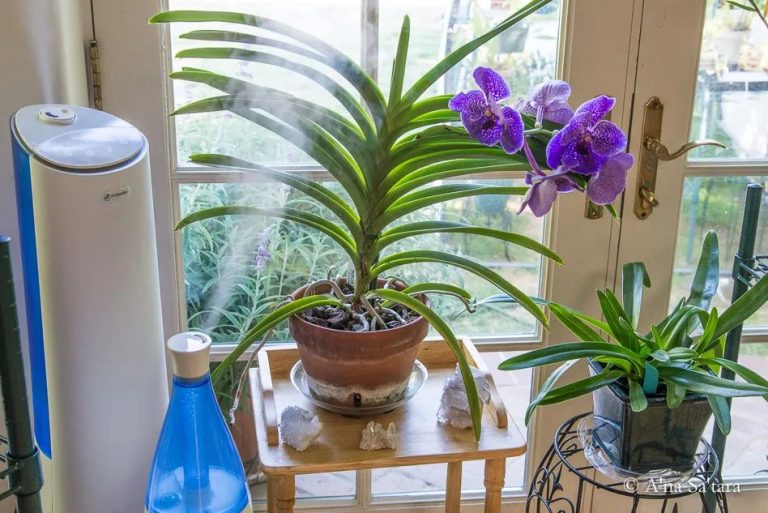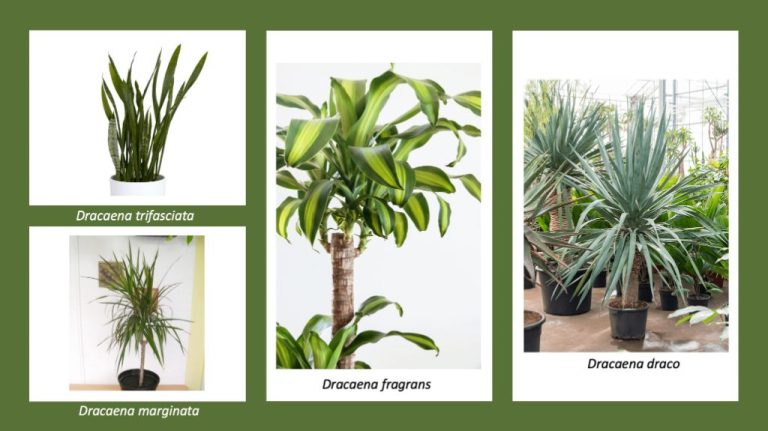The Essential Guide To Caring For Ivy Plants Indoors
Ivy plants are popular and attractive indoor plants known for their trailing vines and lush green foliage. There are many varieties of ivy to choose from, but common types include English ivy, Algerian ivy, and Swedish ivy. Ivies grow well in hanging baskets or training up supports like trellises and moss poles. With the right care, indoor ivy plants can provide natural beauty and numerous benefits for years.
One major benefit of ivy houseplants is their ability to purify indoor air. Studies show that English ivy in particular can effectively remove airborne fecal-matter particles from the air [Source]. This helps create a cleaner indoor environment. Ivy’s large leaf surface area allows it to absorb toxins and regulate humidity as well. The saponins in ivy may also help clear respiratory passages and have antibacterial effects [Source].
Ivies are an ideal beginner houseplant because they tolerate a wide range of light, humidity, and temperature conditions. They are quite hardy plants that can bounce back from neglect. With a little basic care, ivy houseplants will thrive indoors for many years. This guide covers the key factors in caring for ivy plants, including proper watering, fertilizing, pruning, pest control, and troubleshooting common issues.
Choosing the Best Ivy Varieties for Indoors
There are many different types of ivy to choose from for growing indoors. Some popular varieties include:
- English Ivy (Hedera helix) – This fast-growing climbing vine has dark green, glossy leaves and is one of the most popular ivy houseplants. It can tolerate lower light conditions. [1]
- Devil’s Ivy (Epipremnum aureum) – Also known as golden pothos or pothos ivy, this trailing vine has heart-shaped leaves that come in different variegated colors. It’s very low maintenance. [2]
- Swedish Ivy (Plectranthus australis) – A fleshy-leaved hanging ivy with silvery-green foliage that prefers bright, indirect light. It grows well in hanging baskets. [1]
- Persian Ivy (Hedera colchica) – This ivy has large, shiny, leathery leaves that can grow up to 12 inches long. It does best in bright, indirect light. [2]
When choosing ivy for your home, consider factors like the light levels in your space, whether you want a trailing/climbing or bushy plant, and how fast growing you want the ivy to be. Slower growing ivies like English ivy may be better for indoor pots than aggressive growers like Pothos that need frequent pruning. Always choose non-toxic varieties if you have kids or pets.
[1] https://www.bathgardencenter.com/post/what-are-the-14-types-of-ivy-houseplants
[2] https://www.thespruce.com/indoor-ivy-plants-8418350
Providing the Right Light Conditions
Ivy plants generally prefer bright, indirect light when grown indoors. According to Clemson University, most cultivars of English ivy grow best in bright light, but not direct sun. Direct sunlight can scorch the leaves of ivy plants.

Signs that an ivy plant is getting too much light include yellowing or browning of the leaves. On the other hand, if an ivy plant is getting too little light, you may notice sparse foliage growth and loss of variegation in the leaves.
The best window exposures for ivy plants are east or west-facing windows where they will get some gentle morning or afternoon sun. North-facing windows can work as well since they offer bright, indirect light without harsh direct sun. Just avoid placing ivy plants in southern windows where they’ll get too much intense sunlight.
Maintaining Ideal Temperatures
Ivy plants prefer cool temperatures between 50-70°F (10-21°C) and do best in rooms that remain in this range year-round https://hgic.clemson.edu/factsheet/growing-english-ivy-indoors/. Extreme heat or cold can damage the leaves and cause growth to slow down. Protect ivy from hot or cold drafts from heating/cooling vents, open windows and doors.
During the winter, keep the plant away from drafty windows and ensure nighttime temperatures don’t drop below 50°F. Use a space heater to maintain warmer temperatures if needed. In the summer, move the ivy to a shaded spot and use air conditioning to keep rooms below 70°F on hot days https://costafarms.com/blogs/get-growing/plant-rx-5-tips-for-raising-english-ivy-indoors. Temperatures above this range can cause leaf scorch.
With proper temperature control throughout the seasons, ivy will continue healthy growth indoors year-round.
Watering Ivy Plants Properly
Proper watering is crucial for keeping ivy plants healthy indoors. How often you need to water depends on factors like the size of the plant, pot, light exposure, and climate. As a general rule, water when the top 1-2 inches of soil become dry. Check soil moisture by inserting your finger into the soil.
Ivy prefers moist, but not soggy soil. Allowing the soil to dry out completely can cause leaf yellowing and drooping. On the other hand, overwatering can lead to root rot. Look for signs of underwatering like wilting, dry leaf edges, and dull coloring. Overwatered ivy may have mushy stems, yellow leaves, and roots emerging from the drainage holes.
During the growing season, ivy typically needs watering every 7-10 days. In winter when growth slows, wait until the top few inches of soil are dry before watering again. Adjust frequency based on your environment – hot or dry rooms require more frequent watering. Always water thoroughly until it drains from the bottom, taking care not to overflow the saucer.
You can find more details on ivy’s water requirements at: https://plantstraws.co/blogs/blog/how-much-water-does-an-english-ivy-houseplant-need
Using the Right Soil and Planters
When it comes to potting soil for ivy plants indoors, it’s best to use a lightweight, well-draining potting mix specifically formulated for houseplants. Look for a soil labeled “indoor plant soil” or “potting mix”. A good starting blend is half potting soil and half perlite or vermiculite, which will provide the drainage ivy needs.
Make sure the potting mix is porous and doesn’t hold too much moisture. Ivies are prone to root rot if left in wet soil for extended periods. Adding materials like perlite, bark chips, coconut coir, or sand creates the air pockets ivy roots require. You can also purchase pre-made indoor potting mixes enhanced with these amendments to improve drainage.
For planters, choose containers with drainage holes to allow excess water to escape. Plastic, glazed ceramic, or terra cotta pots all work well for ivy. Pick a pot that’s just large enough to contain the root ball with a bit of extra room for growth. Overly large containers can hold too much moisture.
Shallow pots work better than deep containers, as ivy has a relatively shallow root system. Aim for a pot width equal to or just larger than the diameter of the ivy’s root ball. For mature ivy plants, use a container proportionate to the plant’s size, about 12-14 inches wide and deep.
Make sure to use a saucer under ivy pots to protect your floors. Avoid letting ivy sit in water that accumulates in the saucer after watering. You may need to dump excess water out occasionally to prevent saturated soil.
Fertilizing for Healthy Growth
Ivy plants benefit from regular fertilization, especially during the active growing seasons of spring through summer. The recommended fertilizing routine is to feed ivy plants diluted liquid fertilizer once every 2-4 weeks from early spring until late summer.
Look for a balanced houseplant fertilizer that provides an equal ratio of nitrogen, phosphorus, and potassium such as 20-20-20. Dilute the fertilizer concentration to half strength before applying it. Another good option is using an organic fertilizer formulated specifically for ivy plants at the recommended dilution rate.
Signs that your ivy plant needs more fertilizer include slow growth, yellowing leaves, and lackluster foliage. Addressing nutrient deficiencies promptly by fertilizing can help your ivy regain its vigor. Take care not to over-fertilize ivy as this can cause leaf burn or unhealthy, excessive growth.
Pruning and Training Ivy Vines
Ivy plants can grow quite long and become overgrown, so occasional pruning is important for maintaining an attractive indoor plant. Pruning keeps growth under control and can be used to shape the vines.
For ivy plants that have become leggy or overgrown, cut the vines back to just above a leaf node using clean, sharp scissors or pruning shears. This will promote bushier new growth 1. Try to prune in early spring, before new growth begins. Remove any dead or damaged stems as well 2.
You can also prune ivy during the growing season to shape and train vines. Pinch or trim back long trailing stems to encourage fuller growth. Prune just above a leaf node so new shoots will develop. Remove any unwanted stems growing in the wrong direction.
When training ivy vines on supports like trellises or moss poles, prune regularly to guide the direction of growth. Trim off any wayward stems and prune back the growing tips to encourage branching for a bushier plant.
Take care not to overprune ivy or remove more than 20% of the foliage at one time. This can stress the plant. Always sanitize pruning tools before each cut to avoid spreading disease.
Dealing With Pests and Diseases
Ivy plants can be susceptible to a few common insect pests and fungal diseases, especially when grown indoors where conditions may promote them. Being aware of potential issues and taking preventative measures is key to keeping your ivy healthy.
Some of the most common ivy pests include spider mites, aphids, mealybugs, and scale insects. Spider mites are tiny pests that suck juices from ivy leaves, causing stippling, discoloration, and leaf drop. To control them, prune off heavily infested stems, hose plants down to remove webs and mites, and use insecticidal soap or neem oil (http://www.ivy.org/about_bv2.htm). Aphids are small, soft-bodied insects that cluster on young shoots and undersides of leaves, secreting honeydew that promotes sooty mold growth. Knock them off with jets of water and treat with neem oil or insecticidal soap.
Diseases like root rot, leaf spot, and powdery mildew may also affect indoor ivy. Root rot is caused by overwatering and results in stunted growth and leaf yellowing or drop. Improve drainage and allow the soil to partially dry out between waterings. Powdery mildew covers leaves with white fungal growth and can be controlled by increasing air circulation and using neem oil sprays (https://portal.ct.gov/CAES/Plant-Pest-Handbook/pphI/Ivy-English-Hedera). With prompt treatment, most common ivy pests and diseases can be effectively managed.
Tips for Healthy, Long-Lasting Ivy Plants
To keep your ivy plants thriving for years to come, focus on providing ideal humidity, regularly cleaning the leaves, and rotating the plants. Ivy does best when humidity is maintained between 40-50%. Consider using a humidifier during drier winter months to prevent brown crispy leaves. Also, be sure to mist ivy frequently to increase moisture in the air. A weekly wiping of leaves with a damp cloth removes any dust buildup and allows the plants to photosynthesize efficiently. Every few months, turn the pots a quarter turn to encourage even growth on all sides. An occasional rotation gives a new angle of light exposure. Avoid direct hot sunlight, which can scorch leaves.
According to Bloomscape, “Keep ivy away from vents, radiators, fireplaces, or other sources of hot air. The hot blasts will dry the plant out.” Proper humidity and cleaning enables the ivy leaves to remain lush and verdant for many years of growth.





